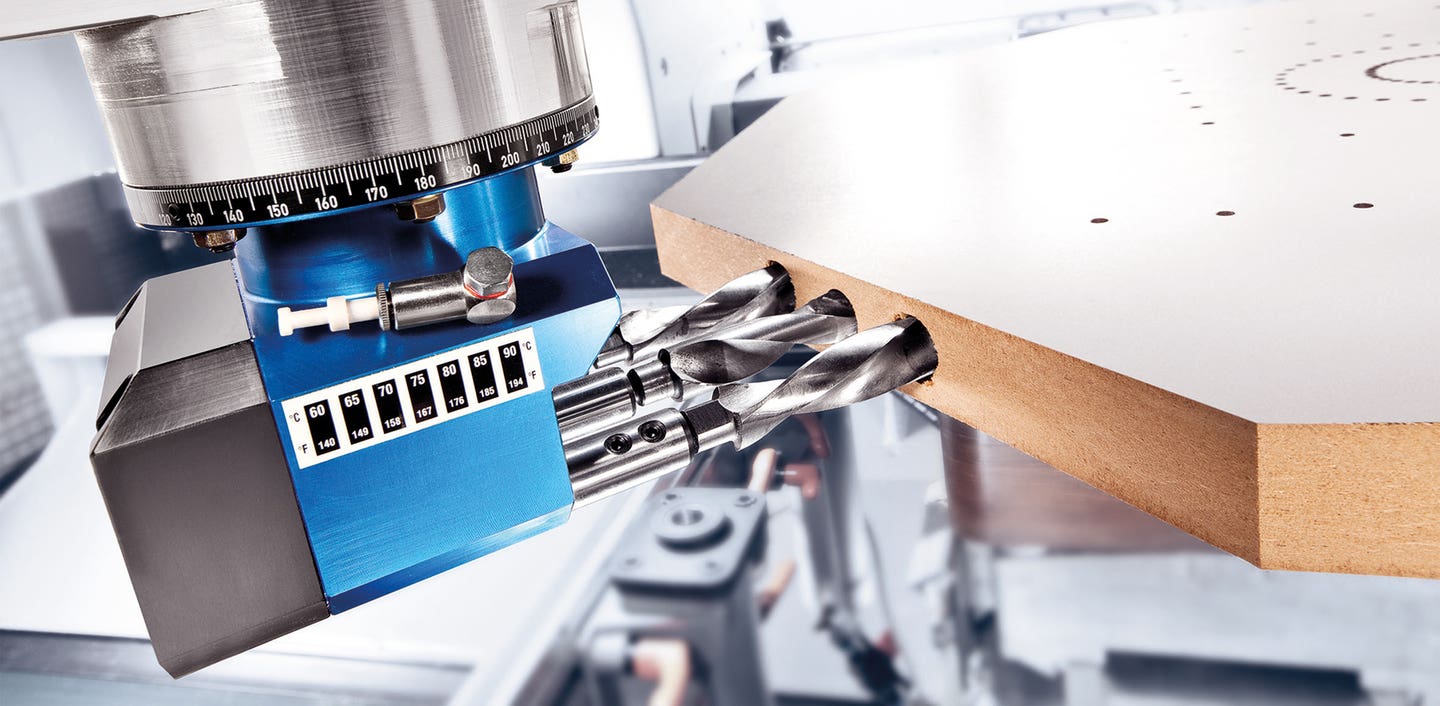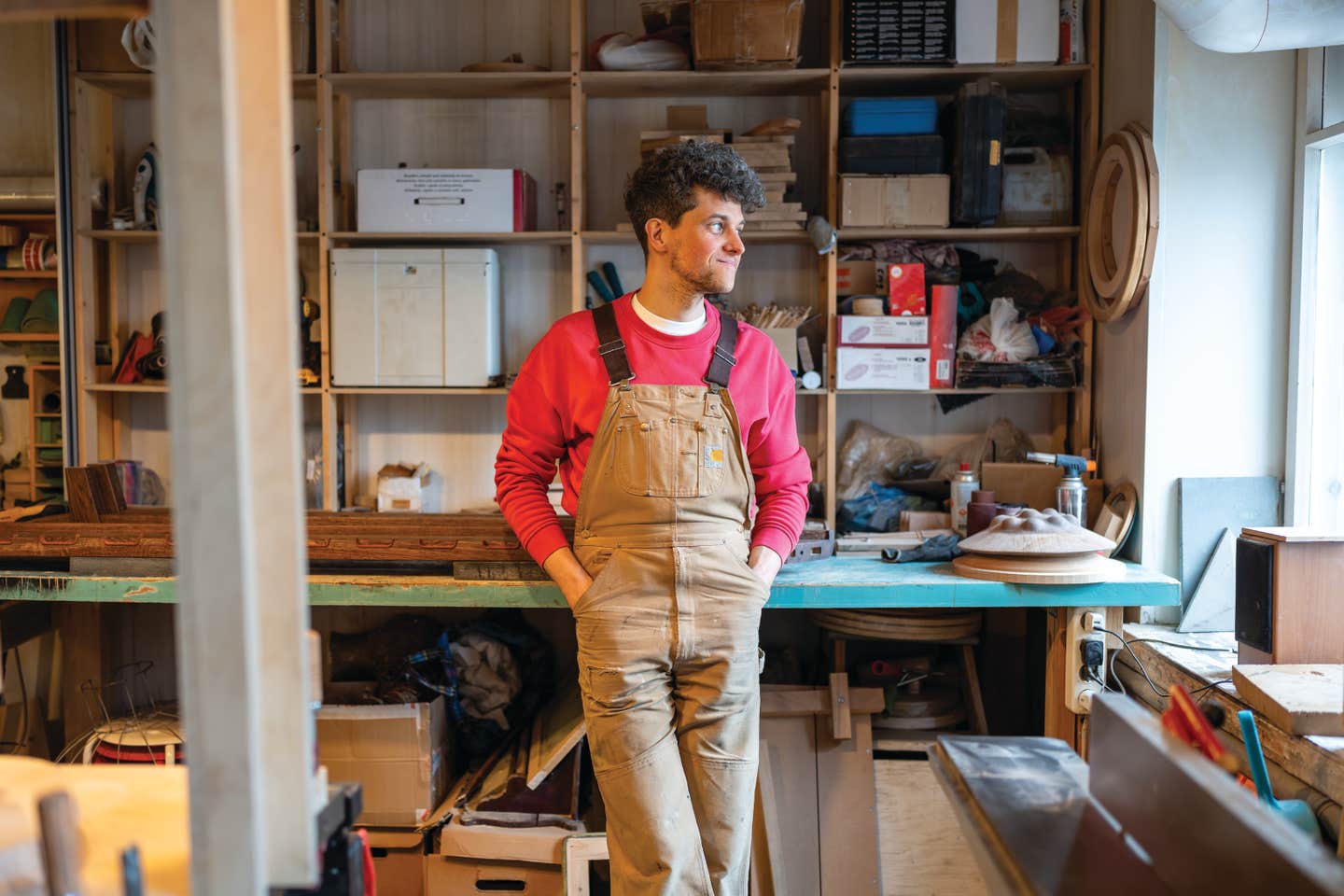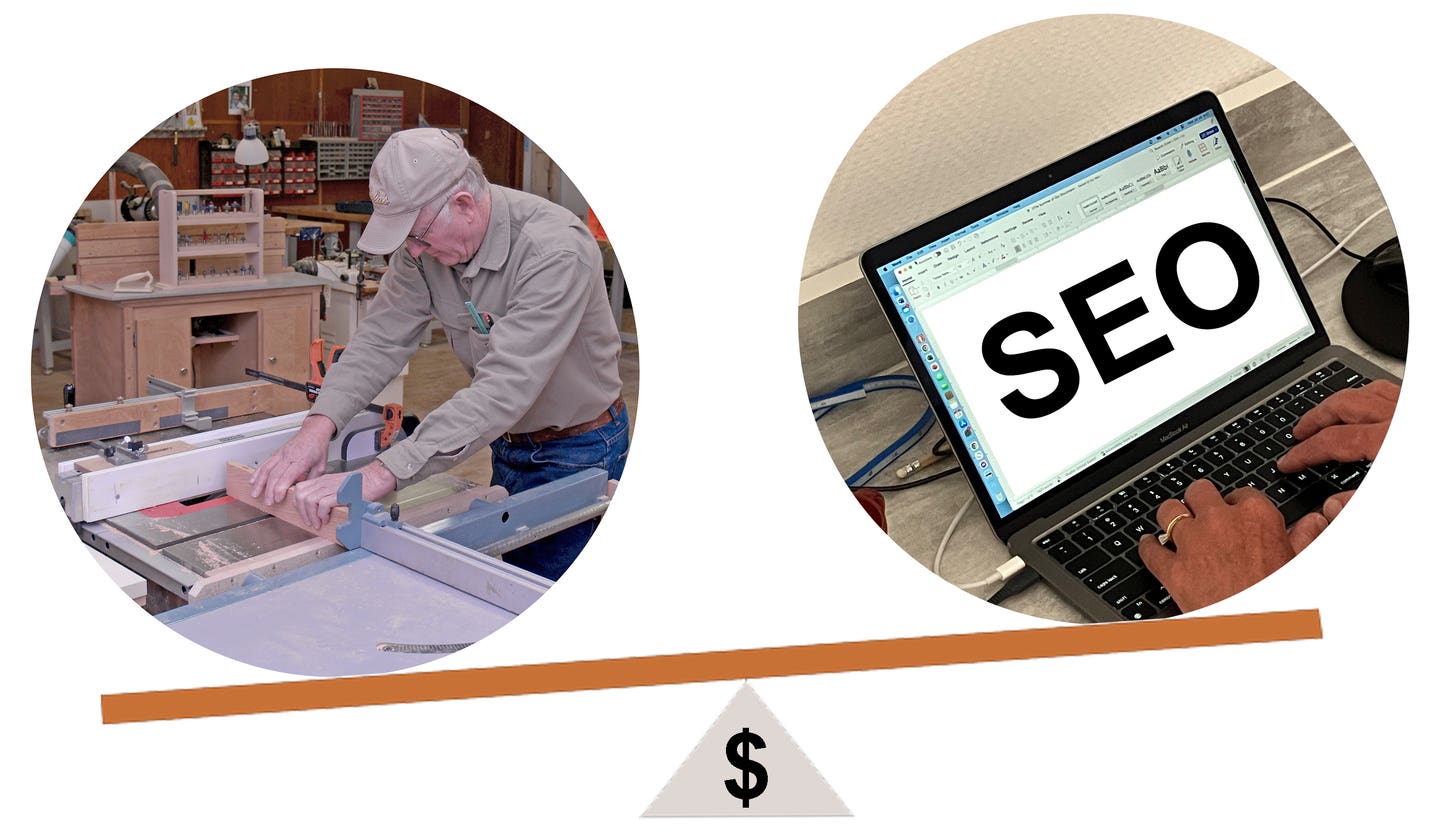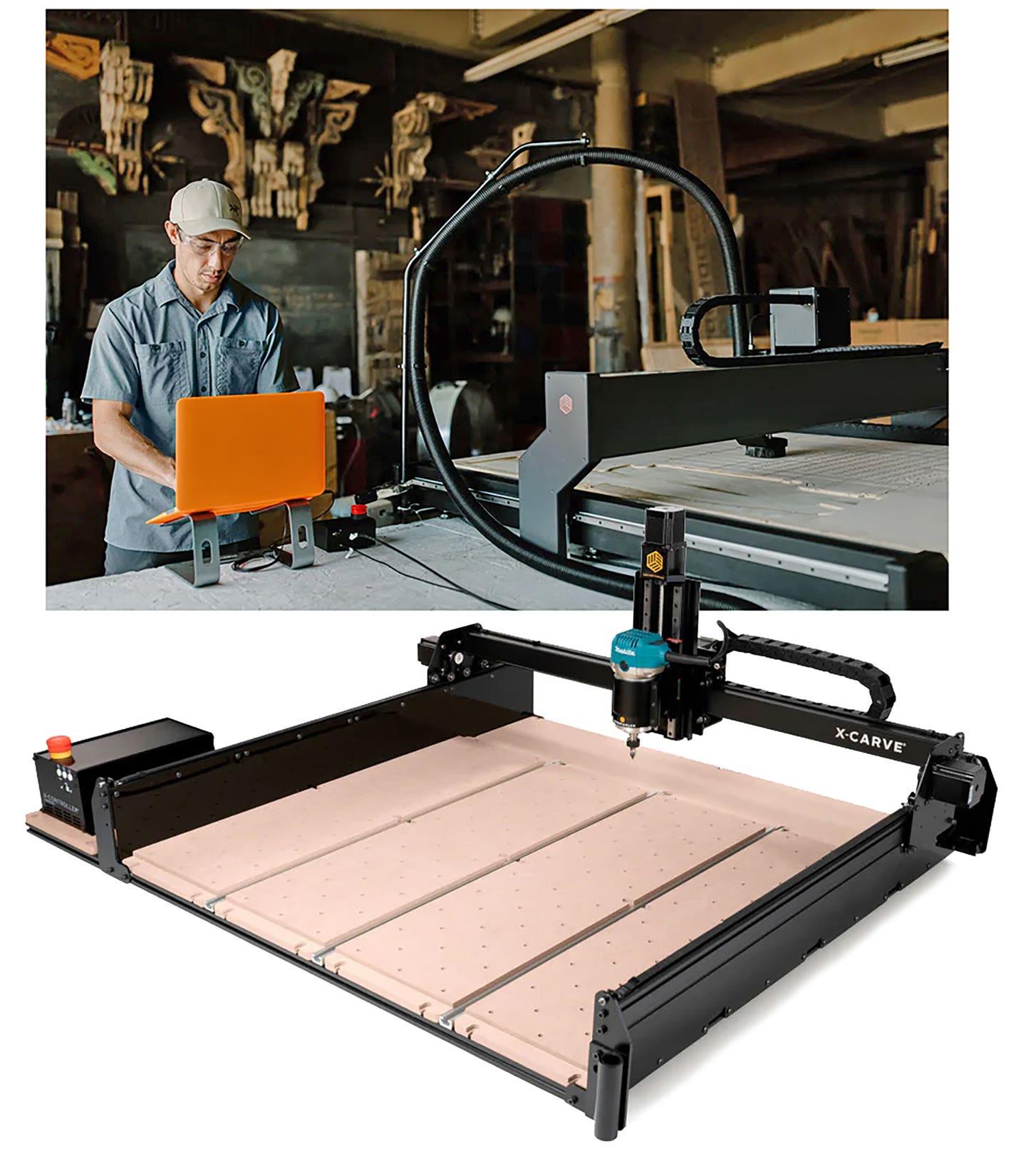Do we still need to measure twice?
Measuring accurately is a cornerstone of our trade, and the means to do so has evolved quite a bit over the past few years.
Measuring accurately is a cornerstone of our trade, and the means to do so has evolved quite a bit over the past few years. Woodshops that automate the process of measuring rooms for cabinetry (called digital templating) can combine laser-based tools with phone or laptop apps that create files for import into CAD software. But the biggest advance in lasers of late may not be technological, but pecuniary: prices have dropped significantly as the industry has matured.
Why template tools?
The most common reasons to switch from tape measures to lasers are time and accuracy. Instead of an estimator making sketches with a pencil and then trying to remember or explain notations to the CAD operator, all measurements are permanently recorded without, at least in theory, human error. Plus, they are already in a digital format that can be imported into a drawing.
Templating tools are also a lot faster than physically making plywood templates or recording endless measurements and angles on paper.
Instead of sending a salesperson out to take measurements that are good enough for a bid, and then sending an installer out later on to harvest more accurate numbers or build a template, the salesperson can be trained to create a digital template during the initial visit. That can then be used to create more accurate estimates, and also deliver perfect installation dimensions. Of course, the learning curve varies depending on the machine and the person, and it’ll take a few jobs to get it right. But template tools are becoming more and more intuitive and user-friendly, and thanks to cellphone apps and other devices the general population (which includes salespeople) is becoming a lot more tech savvy. So, errors are less frequent than they used to be just a few years ago. Plus, residential clients are still quite impressed with the more high-tech approach evinced by an estimator who sets up a tripod, instead of pulling out a tape measure. That adds to their confidence in the shop’s ability to deliver a dream kitchen.
A digital template, or the drawings it engenders, can also be handed off to other subs (tilers, or metal hood or backsplash suppliers, for example) as an electronic file, so that the casework can be seamlessly matched to other components. And the laser can measure and draw existing molding profiles, curves and casework if needed, so that new parts can fit perfectly into old spaces.
With a laser-based tool, an estimator can travel in a small car and leave the pickup truck at the shop. Old-fashioned stick templates are bulky, very delicate, and subject to distortion if they get wet in the back of a pickup or get dropped. A digital template can be emailed as an attachment or saved on a memory stick. Plus, it doesn’t take up any space in the shop. Storing dozens or even hundreds of physical templates can eat up floor space – and time, too, if a woodworker has to sort through them when adding to an older job. Digital files are easy to organize, share, access and modify.
A woodworker taking laser dimensions can also include peripheral measurements that he/she might not have had time for in the past. So, an adjacent door, window or archway can quickly be included in renderings, and that can make renderings a lot more familiar for the client.
Having a salesperson on site do the measurements and a CAD designer at the shop convert them into drawings will automatically create a system of checks and balances that minimizes errors. If a dimension is missing or wrong, it will be a lot more obvious – and more easily corrected - than it would be with a plywood template.
Things to think about
When it comes to investing in digital template tools, the scale and type of work that a woodshop produces should influence any buying decision. For example, if a woodshop is sub-contracting all of its countertops, that might remove some of the justification for investing in a higher end tool. Cabinets can often be adjusted with filler strips or judicial scoring to wriggle into a space, but countertops are far less forgiving and require great accuracy in the template.
If the shop mostly builds free-standing furniture and only produces a couple of fitted kitchens a year, it might be hard to see savings in terms of an estimator’s time.
An inexperienced template maker will often think in only two dimensions. If the floor or ceiling are not level, or the walls are out of plumb, this can telegraph into casework and counters that don’t fit the space. Some tools can swivel 90 degrees on the tripod and take 3D measurements, so that may be worth researching.
Who is doing your estimates? There are tools on the market that use a retractable string and a digital pen to take measurements, rather than using a light beam. These devices might be more comfortable for experienced woodworkers (okay, us old dudes) because they bridge the gap between high technology and physical measuring.
For woodshops on a very strict budget, take a look at plastic template strips rather than plywood. For example, Rocket Supply (rocketsupply.net) sells some that were developed for concrete work, and their corrugated plastic strips can be cut using a razor blade and then bonded together with hot glue or staples to create accurate templates. That can save a lot of time over ripping narrow strips of 1/4” ply at the shop and carrying them to the jobsite. And being plastic, they don’t react to rain in the back of the truck.
Templating tools can very accurately place sinks and other elements in relation to existing features such as windows and walkways. But a physical template is more likely to discover that the fridge door can’t open all the way if a corner of the countertop or a drawer interferes with it.
The old-fashioned plywood strip template is often preferred by stone countertop suppliers because it can be moved around on a slab of granite or marble and used to include the best features or hide bad spots in a sink cut-out. The same is true of large wooden slabs that will be used for tabletops or island counters. And while that process is still possible using a digital template overlaid on an image on-screen, it can be less intuitive for a client to see it on a computer than actually standing in front of the stone and seeing the actual layout. However, the screen version can be magnified for greater detail, and many clients are more comfortable with the high-tech option.
Most laser measuring devices talk to a laptop or phone using Bluetooth or WiFi, so wires are no longer a restriction. Talk to the laser salesperson about the hardware you’ll be using, to make sure it’s compatible (Mac users beware!), and also do a search online to see if other users have reported problems. It may be time to update your phone.
The bottom line
If a woodshop owns or will soon own a CNC router and also uses rendered drawings in the bidding process, then investing in a templating tool is pretty much essential. And if the shop makes some of its own countertops in-house, a templating tool will pay for itself very quickly.
There is a way to step delicately into this new environment. A shop can initially hire laser templating and see how it goes. For example, Laser Products in Denver (laserproductsus.com) offers digital laser templating services. These include CAD work, training, and tool measuring services. According to company president Rich Katzmann, his team will measure, do layouts, translate files to CAD drawings, schedule jobs, and handle customer paperwork. Last fall LPI introduced the LT-2D3D-C, which won a Visionary Award for creativity and innovation at AWFS 2017 in Las Vegas. The system is compatible with most standard 3D design and layout software such as Microvellum and Cabinet Vision, and it can generate 3D renderings within minutes after taking the measurements. It’s listed at $15,950, which includes a Microsoft Surface Pro 4 tablet and user training.
Leica (lasers.leica-geosystems.com) offers a wide selection of models through dealerships, many of whom are oriented more to stonework than casework. The company also offers financing. Leica’s 3D Disto system (on the company website at $8,295 at the end of August) is billed as the perfect tool for creating CAD templates, delivering 3D visualization and navigation (that is, walking through renderings), capturing ‘as-built’ measurements, and BIM (building information modeling), which allows a shop to do things such as lay out anchor points, transfer heights and verify critical locations.
ETemplate Systems in Raleigh, N.C. (etemplatesystem.com) offers a range of 2D and 3D laser-based countertop measuring systems. The Pro versions are at the top of the range, and the company also caters to shops on a budget with its more economical Xpress versions.
Prodim (prodim-systems.com) originally developed its Proliner specifically for the door industry, and nowadays it’s widely used by stone and other custom countertop manufacturers.
PhotoTop (fabchoice.com) bills itself as “the ultimate solution to producing fast, accurate countertop templates with the click of a digital camera and the move of a mouse.”
AdvancedDimensions.com started as a division of Dirig Design Inc., a technical drawing firm in upstate New York. It’s an officially licensed dealer of Leica Geosystems, and includes free training and support on all purchases.
This article originally appeared in the October 2018 issue.







